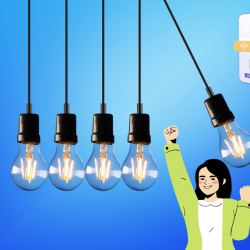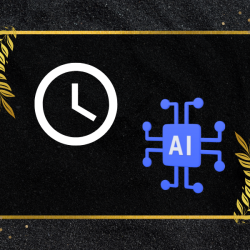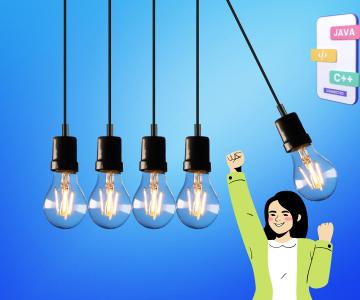10 Points to Boost your Creativity with AI


10 Points to Boost your Creativity with AI
Introduction
AI is quickly transforming the creative process and opening up a world of possibilities. As businesses increasingly adopt artificial intelligence, creative professionals are discovering the many ways it can boost their creativity. Here are 10 points to help you unlock the full potential of AI to unleash your creativity:
- AI & Creativity: AI can be used to automate and streamline tedious tasks like pattern recognition, editing, or data analysis, allowing you to focus more on the creative side of your projects. It can also provide a platform for collaboration with other creatives or access to unique datasets.
- Benefits of AI: AI can generate ideas faster than ever before, increase efficiency when creating graphics and designs, and offer better insights into audience behaviors, preferences, and trends. In addition, you can use AI for predictive analytics, forecasting marketing performance and customer information in real time.
- Creative Possibilities: With AI in creative design projects, you have access to more data which leads to “bigger picture” ideas that you may never have thought of before – fostering an entirely new level of creativity that was previously impossible with manual processes alone.
- Automation & Customization: Automated processes allow designers to create custom designs quickly by eliminating mundane tasks saving them both time and money while at the same time allowing more attention to detail for one-off projects that require high customization like logo design or product packaging design workflows. Data Science Course in Delhi
- Collaborative Design: With AIdriven collaborative tools powering interactive project management systems such as Adobe Spark, creatives now have more opportunities than ever to collaborate seamlessly across teams with different specialties (i.e., writers, designers).
Understand AI Technology
Firstly, let’s cover what AI technology is. Put simply, it’s a computer system that can perform tasks and learn from its experiences. It does this by accumulating large stores of data collected via sensors or human input and using algorithms to identify trends and patterns that can then be used to inform decision making processes or predictive analytics. These same algorithms also power machine learning which allows AI to become smarter over time as it produces results faster and with greater accuracy than ever before.
A key feature of AI technology is its ability to understand natural language processing (NLP). This allows people to interact with machines in the same way they would communicate with other humans – through voice commands – making the experience much more intuitive and user friendly. Additionally, neural networks allow computers to process large amounts of data quickly while identifying similarities between complex data sets that would Have been impossible for humans to process independently.
Using AI technology for creativity can open up new ways of thinking about projects, allowing us to explore insights, uncover unexpected connections between ideas, even generate new ones entirely! It’s also useful in developing predictive models based on our interactions with the system which could lead to surprising outcomes even when considering well established parameters. Data Analyst Course in Delhi
Identifying Potential Opportunities for AI
Here are 10 points to help get your creative juices flowing with AI:
- Brainstorming ideas Use AI to generate creative ideas that you can take into consideration when brainstorming. AI software can assist in quickly generating a large array of innovative thoughts which can spark your own creativity.
- Artificial Intelligence (AI) Utilize AI to strengthen your decision making process by automating data driven processes and developing powerful machine learning algorithms. This will help ensure that your decisions are based on accurate insights and reliable data analysis.
- Innovative concepts With the help of AI, you will be able to uncover hidden opportunities that you may not have thought of before due to time constraints or lack of information typically available on the market. With state of the art technologies like natural language processing, image recognition, audio recognition, and data mining capabilities, you can quickly uncover potential solutions from a wide variety of data sources for whatever challenge you’re currently facing.
- Problem solvers Leverage AI tools such as problem solving algorithms and other automated programs in order to brainstorm ideas and develop solutions more quickly than a single individual would be able to do alone. These tools can provide valuable insight into problems more efficiently than manual research methods due to their ability to parse data at a much faster rate.
Prioritizing Projects to Innovate with AI
Leveraging AI technology to innovate and prioritize projects can be a daunting task. While the potential for growth and development are substantial, implementing AI solutions can seem overwhelming. That’s why it’s important to evaluate your opportunities carefully and measure their impact accordingly. To help you accomplish this, here are 10 points to consider when using AI in order to boost your creativity:
- Prioritizing projects that make the most sense Installing new AI systems requires careful consideration. Make sure any project is in line with the company’s objectives, and assess what resources need to be allocated.
- Take advantage of data availability Gather as much data as possible before moving forward with any project, as this will provide valuable insight into how the new system will function.
- Leverage algorithms and tools – Different algorithms can be used to optimize decisions based on available data, while tools such as natural language processing (NLP) can be used to analyze text based information more accurately.
- Get creative with automation – Automation can be a powerful tool, but it’s only effective if you utilize it strategically. Ensure all processes are optimized for speed and accuracy before implementing them into your workflow.
- Measure impact Establishing metrics is essential before investing in any new system; this allows you to measure the effectiveness of your campaigns and encourages further development of existing technology and toolsets.
- Utilize resources strategically Dedicating resources wisely is key when embarking on an AI project; make sure personnel have the necessary skills to succeed, while keeping costs low by utilizing free or cheap software where applicable.
Leveraging Resources and Tools to Create with AI
To get the most out of your AI, here are 10 points to boost your creativity with AI.
- Leverage Resources:
When it comes to using AI in creative projects, having access to the right resources is key. Leverage resources like video tutorials, online courses, books or other content sources that offer tips on how to use certain software or tools needed for creative projects. Doing so will help you take full advantage of the power of AI when building your creations.
- Automate Tasks:
Using AIpowered technology can help you save time by automating menial or repeatable tasks that usually eat away at valuable hours in your daytoday activities. Automation is a great way to increase efficiency and free up more time for exploration and creativity during a project’s creative process.
- Enhance Productivity:
By taking advantage of the power of AI, you can systematically address data heavy processes more productively than ever before such as optimizing data for analytics purposes or improving accuracy in quality assurance testing. This will enable you to focus on what matters—the creative aspects of your project—while still having accurate results quickly achieved within a shorter timeline than before.
- Enhance Your Tools:
To take things up a notch, there are many tools available that incorporate emerging technologies such as natural language processing (NLP), computer vision (CV), and robotic process.
Experimenting with AI Models and Solutions
AI models are powerful tools, but that doesn’t mean they should be used without caution. Before combining techniques and automation with AI models, it is important to ensure that the data sets used in the model are reliable and accurate so that the model produces meaningful results. Data augmentation is a great way to clean and prepare data for use in AI models.
Once your data is ready for use in AI models, you can explore different types of solutions. Visual recognition is a powerful tool for image classification, text classification can help facilitate natural language processing tasks, and hyperparameter optimization helps professionals find the best set of parameters for their model performance. Transfer learning is an important topic to understand when experimenting with new AI solutions as it allows users to cut down on development time by taking existing model architectures and repurposing them for their own needs. Data Science Institute in Delhi
At its core, experimenting with AI models requires a combination of creativity and technical knowledge to produce effective outcomes. With these 10 points as a guide, you will have the tools necessary to begin your exploration of AI solutions safely and confidently:
1) Ensure data reliability before incorporating into your AI models
2) Use data augmentation techniques to clean and prepare your data sets
3) Utilize visual recognition for image classification tasks
4) Apply text classification technologies for natural language processing projects
5) Leverage hyperparameter optimization to find the best parameters for model performance
Develop an Iterative Design Process
- Iterative Design Process: Utilizing an iterative design process helps reduce the risk of introducing costly errors or delays further down the road. This type of process involves breaking the task down into smaller parts so that each decision can be evaluated independently throughout each iteration.
- AIDriven Creativity: The use of AI’s such as machine learning algorithms can greatly aid in the creative process by offering up creative insights and possible solutions that were not previously considered.
- Breaking Down Tasks: By breaking down tasks into smaller parts, it becomes easier to identify and analyze potential areas for improvement during each iteration. This will help ensure all aspects have been taken into consideration before moving onto the next step of development.
- Constraint Generation: AI programs can generate constraints and parameters to help focus your efforts during each iteration by restricting what can be done or experienced with a given piece of work.
- Prototyping & Testing: During each iteration, it’s important to prototype and test out ideas in order to accurately assess their feasibility and effectiveness before launching them out into the world.. This helps ensure that they meet customer expectations while also being cost effective for your business.
Evolving Your Strategy with Regular Reflection and Adjustment
As AI continues to become more useful, organizations should seek opportunities to adapt their processes and gain competitive advantages through the use of AI technology. As you experiment with AI, identifying weaknesses in processes can help you determine which areas need adjustments or changes. Additionally, adapting to new situations quickly can be instrumental when determining success or failure of a business venture.
You should always reassess priorities in order to stay one step ahead of the competition by using AI technology effectively. By being proactive in your strategy through regular reflection and adjustment, you will be able to stay ahead of the curve and remain competitive within your industry. Here are 10 points that can help boost your creativity when incorporating AI:
- Take Time for Reflection & Adjustment Take time out each month or quarter to review progress and identify areas that require changes or improvement through the use of AI.
- Review Progress Monitor data sets or metrics over time in order to measure successes/failures so that areas needing improvement can be identified for adjustment
- Learn from Mistakes Identifying the causes of failure helps us understand our mistakes and allows us to learn from them for future success.
- Experimentation with AI Don’t be afraid to try out new ideas or technologies with AI as this experimentation could lead to unique solutions for problems.
Assessing Performance & Impact of Your Creative Outputs section : Staying Ahead in the Fast Moving World of AI creativity Takeaway : 10 Points to Boost Your Creativity with Artificial Intelligence
As creatives, staying ahead of the fast moving world of AI is essential to remain competitive. AI algorithms have revolutionized creative processes, allowing us to create works of art and compelling stories that are more sophisticated than ever before. By leveraging AI for automated tasks and production cycle times, we can optimize creativity and productivity like never before.
To help you stay at the forefront of this exciting new frontier in creativity, we’ve put together 10 points to boost your creativity with AI – helping you use artificial intelligence to take your creative outputs to the next level.
- Leverage AI for workflows: When it comes to creative production cycles, nothing beats having an artificial intelligence algorithm on hand to automate mundane tasks such as image manipulation or text transcribing. This will free up time and resources so you can focus on bigger projects or take your ideas in a whole new direction.
- Assess performance & impact: It’s essential to be able to assess the performance and impact of your creative outputs when using AI technologies. This allows you to measure results and adjust strategies accordingly – helping you maximize efficiency and effectiveness in the creation process.
- Analyze generated data: By looking at the data generated by an AI workflow, we are able to understand what kind of content works best for our audience – providing valuable insights that can help us hone our creative process.
- Automate mundane tasks: We’ve mentioned this before but it bears repeating – freeing up time from mundane tasks like transcribing audio into text or cleaning up images goes a long way towards improving efficiency during project development cycles – allowing you more time to focus on developing something truly great.






Ingen kommentarer endnu